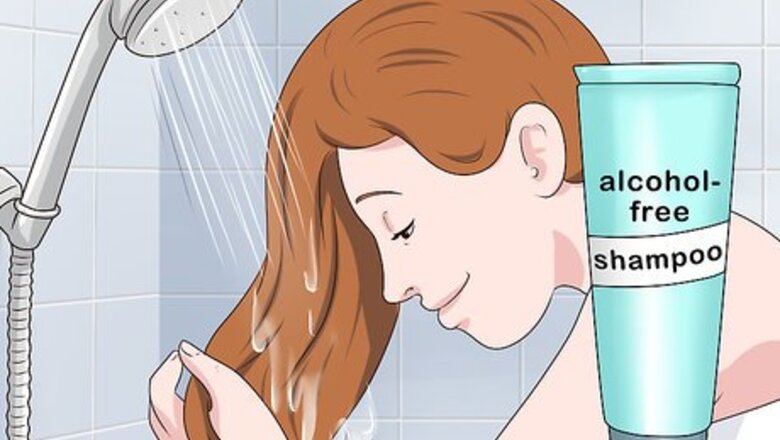
views
Making Your Extensions More Manageable
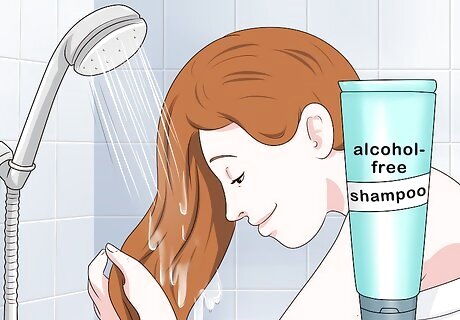
Wet the extensions. If you try to detangle your extensions while they’re dry, you may cause breakage and shedding. Wash the extensions with water and your usual shampoo, rinsing well to ensure that there are no suds left behind. For extensions made of natural hair, use an alcohol-free, sulfate-free shampoo formulated for color-treated hair. For synthetic hair extensions, use a mild shampoo or one formulated for synthetic hair. If you have lower quality synthetic extensions, it may be easier to simply purchase a new set than to risk detangling them and making them look worse.
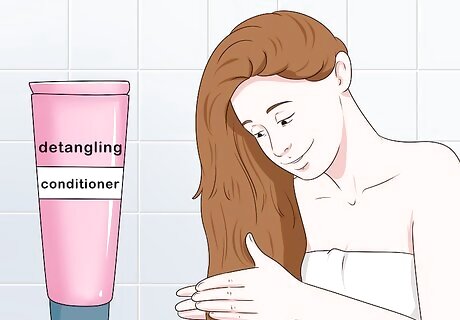
Apply a detangling conditioner to the extensions. The extensions will be even easier to detangle if you treat them with a conditioner. Massage a detangling conditioner into the extensions and rinse them clean with lukewarm to cool water. You can use detangling conditioner on both natural and synthetic extensions. These conditioners work really well on curly and wavy extensions, in particular. If you have straight extensions or extensions that aren't too tangly, you may be able to use a regular conditioner. If you prefer, you can apply a detangling leave-in conditioner instead of a rinse-out formula. Lightly spray it onto the extensions after you wash them and gently massage it into the tangles.
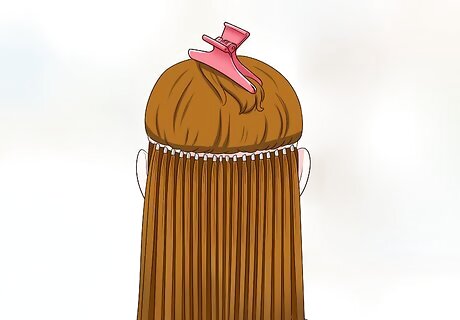
Separate your natural hair from sewn- or glued-in extensions. You’re more likely to tug and damage the extensions -- and your natural hair -- if you try to detangle them in one mass. Clip your natural hair out of the way, so you can work on detangling the extensions without pulling on it and causing breakage. Once your natural hair is out of the way, it's a good idea to divide the extensions into smaller sections before detangling. That will minimize the pulling and tugging on them.
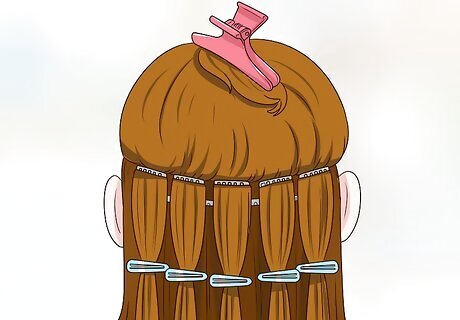
Divide clip-in extensions into individual wefts. Even if your extensions aren't sewn or glued in, you can damage them if you try to detangle them all at once. Separate the extensions into the individual wefts so you can get the tangles out more easily. You may want to divide larger wefts into two or three sections for easier detangling.
Removing the Tangles
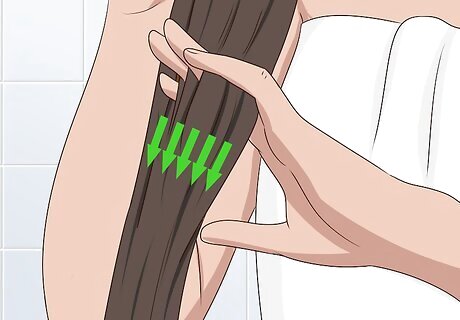
Detangle minor tangles with your fingers. If your extensions are only slightly tangled, you may be able to use your fingers to remove the tangles. They'll be gentler than a comb or brush, so you won't pull or tug on the hair too much. Comb through the extensions with your fingers, but work slowly and gently until the tangles are removed.
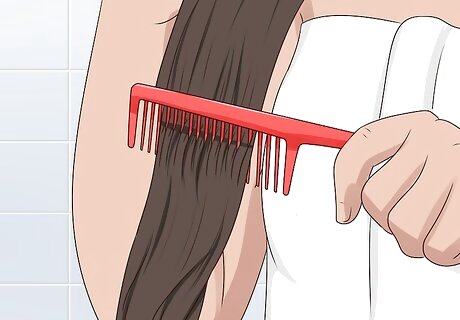
Use a wide-tooth comb for major tangles. While wetting the extensions helps make it easier to detangle them, hair is also more fragile when it’s wet. To avoid breakage and other damage, choose a wide-tooth comb rather than a brush or fine-tooth comb. The wide space between the comb’s teeth helps to gently detangle rather than pulling or tugging at the hair. You can also use a boar-bristle brush if you prefer.
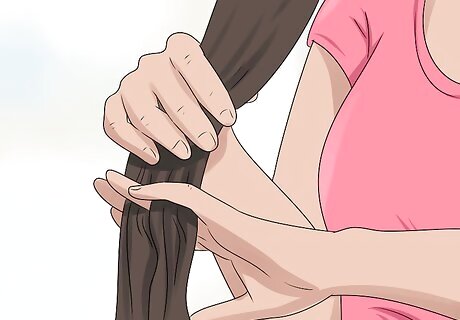
Hold the extension right above the tangle. You don’t want to pull on the hair in your extensions as you run the comb through it or you may cause breakage. To keep from tugging too hard, use your free hand to hold the extension just above the tangle or knot.
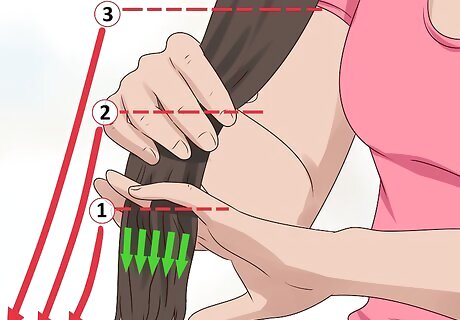
Start detangling at the bottom of the extension. If you start combing from the top of the hair extension, you’ll have to work through the entire knot or tangle to make it to the end. Starting at the bottom allows you to detangle small sections of the knot at a time, so you don’t damage the hair. If your extensions are glued in, you should be very careful with this step. Detangling glued in extensions may cause them to come loose if you pull too hard.
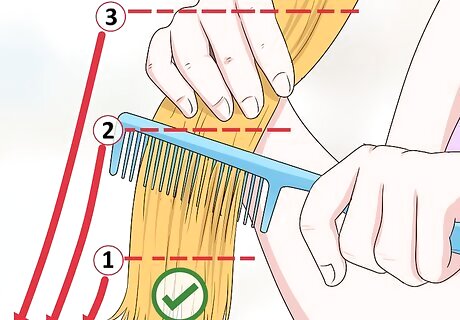
Move your comb upward when the bottom is detangled. Once you've detangled the bottom of the extension, place your comb a little higher and work on that section of the tangle. Run the comb through the extension gently until you've detangled that section as well. Repeat the process until the entire tangle is removed.
Preventing Tangled Extensions
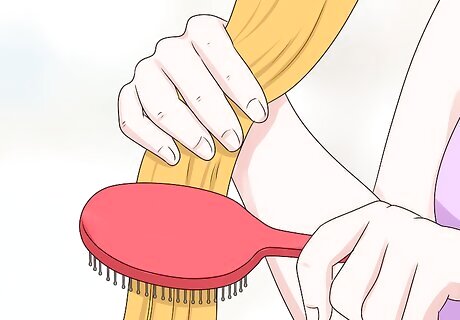
Brush your extensions regularly with a natural bristle brush. To keep your hair extensions from getting tangled in the first place, it’s important to brush them regularly. Use a soft bristle brush to comb through them before and after each time you wear them. If your extensions are sewn or glued in, brush them along with your natural hair two to three times a day to keep them free of tangles.
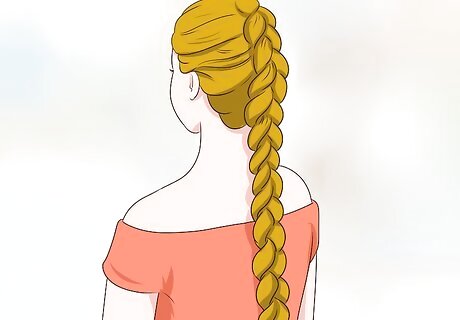
Braid your extensions. The longer the length, the more likely your extensions are to tangle. You can keep your hair extensions free of tangles by braiding them. If they’re glued or sewn into your hair, braid them with your natural hair. If they’re clip-in extensions, braid them after you take them out of your hair for storage. Any type of braid that you prefer will work for keeping the extensions free of tangles, but a simple 3-strand braid is usually the easiest.
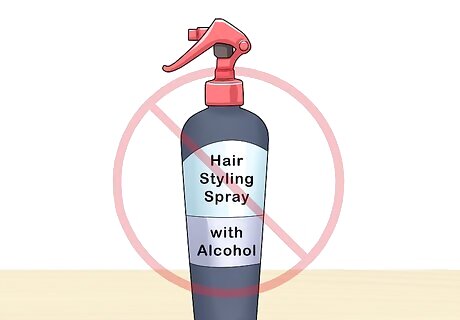
Avoid using stylings products with alcohol. If your extensions are made of natural hair, you can use the same styling products that you use on your natural hair for them. However, to keep the extensions free of tangles, don’t use products that contain alcohol. It is very drying, so it leaves your hair more prone to snags and tangles. Synthetic hair extensions, in particular, are prone to matting when you use products with alcohol on them.
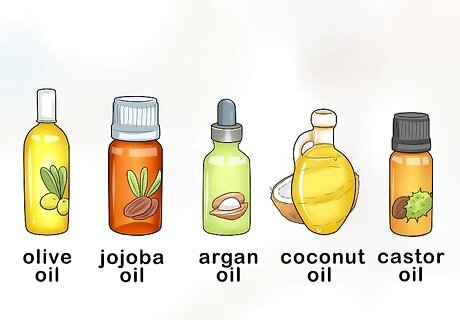
Moisturize the extensions with light oil. If your hair extensions are smooth and moisturized, they’re less likely to tangle. To keep your extensions properly hydrated, massage a small amount of a light hair oil into them at least once a week. Argan, coconut, castor, olive, and jojoba oils are all good options. If your extensions are sewn or glued in or you wear them every day, you should apply the oil daily.




















Comments
0 comment